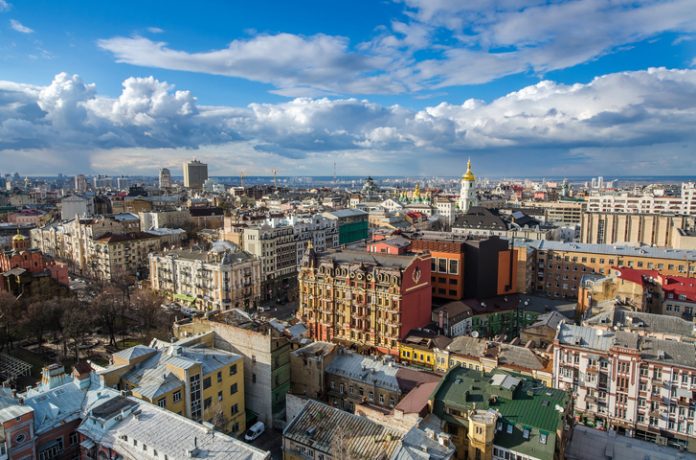Quite recently Ukraine has adopted an Authorized Economic Operator (further – “AEO”) program to join 97 Worldwide programs. The program is mainly incorporating the EU standards of AEO benefits and simplifications.
Among theoretical issues, there are a few practical things to consider (if you have a Ukrainian manufacturing subsidiary):
1. All companies (except AEOs, type C) will be obliged to provide goods to the customs posts during each import, starting from November 07, 2022[1]
As of now, the majority of foreign companies are carrying out import customs clearance without additional interactions with customs.
But, starting from this date, companies will not be allowed to use a preliminary declaration (so-called “type EA”) to avoid providing goods to customs posts.
This simplification will be only available to the companies, authorized as AEO (type C). They will be entitled to do import custom clearance on their own facilities.
2. The same applies to export operations[2].
Now, the number of companies with foreign investments can avoid providing goods to customs posts as well while exporting. This will not be the case starting from November 2022.
The only exception from this rule would be to become an AEO-C. AEOs will be entitled to conduct export customs clearance on their facilities.
3. Other substantial simplifications and preferences (authorization type “C”).
These are:
- simplified declaration (fewer data to fill, customs payments can be postponed up to 30 days),
- priority borderline, priority clearance,
- the lower level of risk in the customs risk-management system (potentially fewer troubles with customs value etc.),
- right to general financial guarantee (to cover customs payments) etc.
4. Preferential period for manufacturers to apply.
Until November 07, 2022, only manufacturers who import/export will be entitled to get AEO authorization (type “C”) in Ukraine. Other companies will only be allowed to apply after this date.
After the time limit expires, the majority of importers will surely try to benefit from AEO status. Mainly to mitigate additional financial and administrative expenses (due to obligations to provide the imported goods to the customs posts each time).
Based on this, we expect an increase of AEO applications in the nearest future. At the same time, the capacities of the customs office are, naturally, limited. Furthermore, there is a legislative limitation of 30 applications max. to be considered at the same time during 2022. So, we recommend manufacturers applying within this preferential period.
5. Potential Mutual Recognition Agreement with the EU (further – “MRA”).
After the successful introduction of AEO program in Ukraine, there is a possibility to reach MRA with the EU. There are more than 90 MRAs signed between different countries, the EU is a part of 6 (China, Japan, Norway etc.).
Ukraine and the EU have an agreement of cooperation and mutual administrative assistance in Customs matters as a legal basis to conclude MRA.
The MRA will allow the reciprocal treatment (simplifications/benefits) to AEO operators in both parties. That will automatically mean fewer controls, priority treatment etc.
6. Common transit simplifications.
Ukraine is about to join the Common Transit system. It may be used by companies to move goods more easily between the EU, EFTA states and other parties in Europe.
The common transit also provides a possibility to get certain simplifications. For instance, it will be possible to get the status of the authorized consignor and/or consignee. The authorized companies will have a right to start or end the common transit at their own facilities in Ukraine.
But the operator will only fully benefit from these simplifications if AEO simplifications will be as well available.
For example, the authorized consignee has a right to end the transit at its own facilities in Ukraine. But to import the transferred goods, one will still need to bring the goods to the customs post (p.1 of this article). Or to have an AEO-C authorization to carry out the customs clearance at the company facilities.
In addition, AEO-C is presumed to automatically comply with the requirements of mentioned transit simplifications. So, it will mainly require no additional efforts from the company (AEO-C) to get the right to these simplifications.
7. Other substantial considerations:
-
It is a worldwide trend.
The statistics show the dynamics – from 45 AEO programs in 2012 to 97 AEO programs in 2021 worldwide[3]. In the EU, the majority of customs clearances are done by the AEO operators. There are more than 16500 authorizations within the EU[4].
-
Financial and time expenses are lower.
Statistically, operating as an AEO operator allows the company to save approx. 30 % of the time and material expenses[5].
-
Business and customs partnership.
As mentioned, AEOs will benefit from fewer physical and documental controls. In Ukraine simultaneously with the AEO introduction, customs are planned to concentrate more on precise and more efficient controlling of the entities without this status.
Based on all the mentioned factors it is highly recommended to consider and check the eligibility of your Ukrainian subsidiary to authorize as AEO-C now.
About the Author

Oleg Kyryievskyi is an International trade lawyer, Attorney-at-Law, managing partner at First Chair Legal, a Ukrainian law firm dealing with international trade and investments. Co-chair of the Customs Committee at European Business Association. One of the recommended lawyers for Ukraine by Best Lawyers 2022
References
- [1] Article 2 of Transitional Provisions of the Law of Ukraine “On amendments to the Customs Code of Ukraine concerning the functioning of authorized economic operators”
- [2] Article 2 of Transitional Provisions of the Law of Ukraine “On amendments to the Customs Code of Ukraine concerning the functioning of authorized economic operators”
- [3] http://www.wcoomd.org/-/media/wco/public/global/pdf/topics/facilitation/instruments-and-tools/tools/safe-package/aeo-compendium.pdf?la=en
- [4] https://ec.europa.eu/taxation_customs/dds2/eos/aeo_consultation.jsp?Lang=en
- [5] https://customs.gov.ua/en/aeo-infographics


































